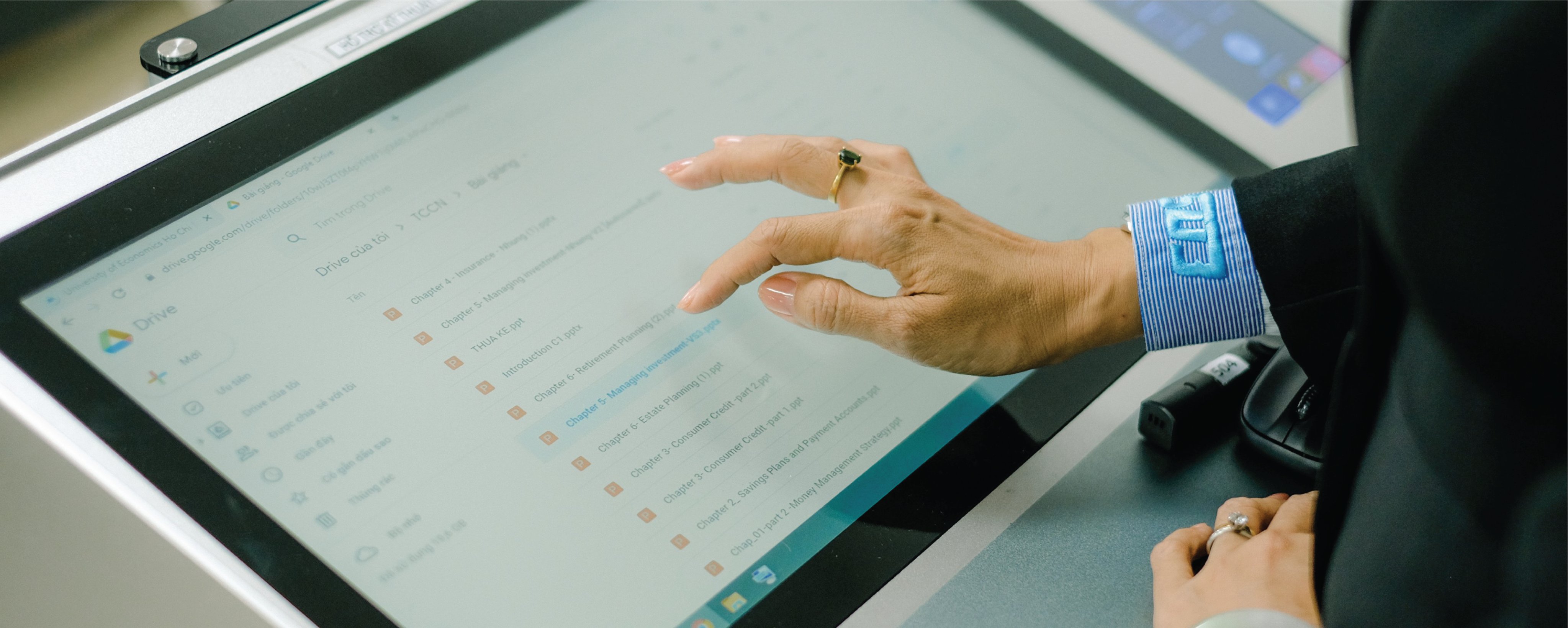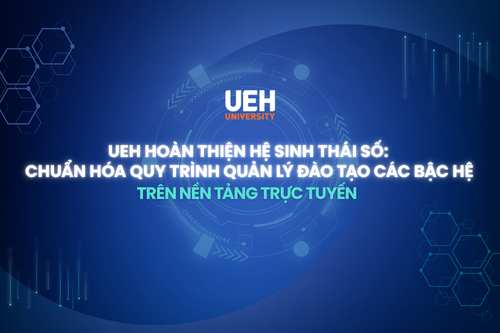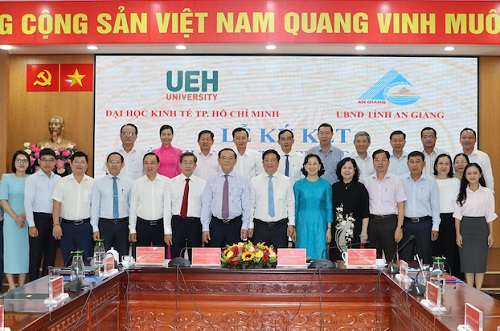
UEH experts on how to effectively implement online learning
12 Jul, 2021
The global spread of the COVID-10 pandemic these past months has taken a huge and devastating toll on people worldwide. Not only did it cause an unprecedented crisis in the global economy and society, it has also gravely affected the education sector, both general and higher education alike. For that, institutions were compelled to get together to answer an age-old question, “How can we implement online learning effectively?”
The COVID-19 pandemic outbreak has paved the way for more online teaching and learning opportunities across various higher education institutions, replacing the traditional in-person instructions. However, due to its unusual nature of occurrences, most schools still struggled to adapt readily as there was a lack of stable infrastructure, online learning system, virtual-centric teaching materials, necessary computer skills and most importantly, both teachers and students’ preparedness for the predicament.
Having said that and in response, higher education institutions must properly address the following items in order to truly implement effective virtual learning
Ensure unified IT infrastructure
Virtual learning requires that all instructions and study activities be conducted using different technologies and equipment, including having a stable and quality internet connection and bandwidth at an affordable cost. While seemingly inconsequential, these factors actually play a major role in fostering a productive and conducive learning environment for all teachers and students.
For that reason, ensuring proper IT infrastructure, strong server maintenance, Internet connection, speed and bandwidth, along with other necessary systems for learning and teaching can and will help further enhance the quality of educational training everywhere.

A properly set-up IT infrastructure ensures stable access to all online learning tools and effective virtual instructions
To meet these requirements, higher education institutions need to manage the effective use of IT infrastructure. Firstly, it is crucial to implement security, maintenance and preservation of the hardware and software equipment for stable, safe and effective use. Secondly, institutions must also look into a simultaneous effort in researching, developing and updating the latest tech so as to keep up with user demands, such as frequent QAQC of all IT infrastructure and equipment, establish a task force with highly qualified software engineers who can respond to any and all arisen needs, formulate an evaluation plan of all hardware and software equipment while also maintaining a clear allocation of resources and budget for managing and investing in system updates and so on.
Doing this will allow higher education institutions access to a more unified and synchronized IT infrastructure, along with a clearly thought-out QAQC process that all departments can abide by to regularly update and monitor teaching quality and students’ academic performance.
Ensure diverse learning resources, meet professional and technical quality
Higher education institutions are responsible for designing and implementing all course materials while also managing QAQC and evaluation of said-programs. On top of that, they are also accountable for monitoring the LMS and conducting frequent updates and periodic reviews for all e-learning materials in a timely manner.
All of this could be done through several steps and stages, such as enforcing new regulations and policies for e-learning activities, organizing training programs and courses for all relevant personnel, including teachers, course coordinators, IT professionals, etc.
In most cases, the learning materials should be clear, concise and practical so as to make it easier for the IT department to design and implement more effectively.

All e-learning materials are regularly updated, reviewed and edited
Establish a high quality teaching workforce
Contrary to teaching in a traditional classroom, instructors conducting online lectures must learn and develop the necessary and suitable skills for such a task. This could include reforming their teaching philosophies and methods so that it could be geared more towards real-life applications, along with understanding and knowing how to integrate technology into preparing and designing their lessons. Additionally, teachers in this new digital age should also be able to undertake any and all interactive activities between them and the learners through a diverse use of their technology and equipment.


The teaching staffs must be able to integrate interactive learning with students using new and improved technology
Accordingly, all higher education institutions should be more mindful in reviewing the current status of their teaching staff, both in terms of structure and the overall quantity/quality of their employees, which would then allow the universities to develop more accurate training plans and strategies to elevate their workforce. Furthermore, universities could do well to carry out evaluative studies on the overall teaching quality through detailed guidelines on online instructions, obtain student feedback through various departmental activities, and design a conducive classroom environment with the right tools and interactive methods. What’s more, the institutions should also ensure that there’s proper and comparable remuneration for all teaching staff as they work towards improving their expertise and innovating different teaching styles
For instance, at the beginning of a new lesson, the teachers would only need to communicate goal-setting instructions, objectives and learning activities. At the same time, they will act as facilitator during the lessons and provide timely constructive feedback to improve the student’s overall learning environment. In virtual classrooms, the lecturers will also have the chance to monitor students’ progress, performance and consequently, make adjustments where necessary to ensure the achievement of the desired outcome of the lesson.
Require active involvement and willingness to learn new IT skills in learners
Virtual learning has made it so that the students do not need to attend in-person classes and instead, they are required to self-study at their own pace. This means that the quality of any and all training activities are heavily reliant on the student’s self-discipline and how they carry on with lecturers on their own. In other words, online learning will require students to be more proactive in their own learning, researching and interacting with their instructors and peers to acquire knowledge more productively.
Additionally, due to the dependence on IT tools and equipment, students are also obligated to be adept in navigating through different platforms and systems in order to make the best use of their devices as well as online resources.

Students must adapt to a proactive stance in their own learning so as to make the best out of the new technology integration in their lives
Besides the subjective and objective existences of different IT platforms, the fact that their unity in the way teachers and students adapt to this “new normal” can and will be extremely instrumental to the long-term success of technology integration. In maintaining one’s innovative spirits and learning from past mistakes, institutions can definitely improve their own operations for a more rewarding digitized future. In the coming days, online and offline learning will continue to complement each other in an effort to perfect “blended learning”, which is also to become a new educational trend globally.
News, photos: School of International Business - Marketing, Department of Marketing and Communication.








